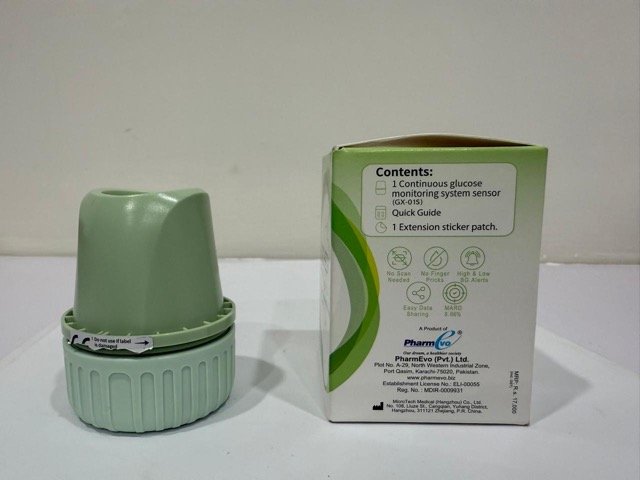Abatacept (Orencia) is a novel drug recently approved in the United States and European countries for the treatment of autoimmune rheumatic diseases like Rheumatoid Arthritis.
Abatacept drug class:
It belongs to the class of medicine that inhibits the activation of T cells by binding to CD 80 and CD 86 present on the APC (antigen-presenting cells). It is a selective costimulation modulator
(Abatacept) Orencia indications:
- It may be used as a monotherapy or in combination with other anti-rheumatic drugs in patients Rheumatoid arthritis.
- Abatacept should not be used along with TNF-blocking agents (like adalimumab, etanercept, and infliximab, etc) and anakinra.
- It can also be used alone or in conjunction with methotrexate to treat mild to severe juvenile idiopathic arthritis.
Abatacept in Psoriatic arthritis:
- The FDA has approved abatacept for treating psoriatic arthritis. NSAIDs, Methotrexate, Sulfasalazine, cyclosporin, and leflunomide are effective in the treating peripheral arthritis in patients with psoriasis.
- However, none of these drugs have proven roles in modifying disease progression and halting joint destruction.
- Abatacept in clinical trials was found effective in 39% of the patients compared to placebo (22%).
- It has also been found effective in patients with axial involvement in psoriatic arthritis, enthesitis, and dactylitis.
Abatacept in Juvenile idiopathic arthritis:
- Additionally, it has been licenced for use in children with moderately to highly active juvenile idiopathic arthritis as a monotherapy or in combination with methotrexate.
(Abatacept) Orencia dose:
Abatacept (Orencia) should be administered via an intravenous infusion initially
Adult patients with upto 60 kg body weight:
Dose via intravenous infusion:
- 3 doses of 500 mg every 15 days
- 500 mg every month by intravenous infusion
Otherwise it can be infused by a subcutaneous injection:
- 125 mg once a week, with the first dosage administered subcutaneously one day after the intravenous loading dose;
- Patients who are unable to get an intravenous infusion may begin subcutaneous abatacept treatment without first receiving an intravenous loading dose.
Adult patients with a body-weight of 60 – 100 kgs:
- A Loading Dose via an intravenous infusion:
- 750 mg every 15 days for 3 doses
- followed by intravenous infusions 750 mg monthly.
Alternatively by subcutaneous injection:
- 125 mg once weekly, the first subcutaneous dose should be given within 1 day of the intravenous loading dose;
- (patients who are unable to receive an infusion may initiate subcutaneous abatacept without receiving an intravenous loading dose)
101 kg and above weighing adults:
Loading dose via intravenous infusion: 3 doses of 1000mg for 15 days
- 1000 mg every month by intravenous infusion
Alternatively by subcutaneous injection:
- The first subcutaneous dose of 125 mg once weekly should be administered one day after the intravenous loading dose;
- (patients who are unable to receive an infusion may initiate subcutaneous abatacept without receiving an intravenous loading dose).
Intravenous Dose of Orencia (Abatacept) in Children:
Children 6 years of age or older and weighing less than 75 kgs:
- 10 mg/kg
- The dose is repeated at 2 weeks and 4 weeks after the initial dose and every 4 weeks thereafter
Children 6 years or older and weighing more than 75 kgs:
- Follow the Usual adult dosing with a maximum dose of up to 1000 mg
- Following the initial dose, the dose is repeated at 2 weeks, 4 weeks, and then every 4 weeks after that.
Dose in Kidney disease:
- The manufacturer has not provided any dose adjustment in patients with kidney disease.
Dose in Liver Disease:
- The manufacturer has not provided any dose adjustment in patients with liver disease.
How to administer Abatacept (Orencia)?
Intravenous infusion of Orencia:
- Infuse for 30 minutes.
- Inject using 0.2-1.2 micron low protein-binding filter
Subcutaneous administration of Orencia:
- Before injecting, let the prefilled syringe warm at room temperature for 30 to 60 minutes.
- Preferably inject into front thigh, or the abdomen but not close to the navel (keep a distance of about three fingers from the navel), or the outer upper arms (the least preferred site).
- Do not inject into an inflamed area i.e. tender, bruised, red, or hard skin.
- Always rotate the injection sites
Pregnancy Risk Category: C
It may be used if benefits outweigh the risks
- Pregnancy Implications Pregnant females have not been tested with Abatacept. Animal studies have not shown any teratogenic effects.
- Lactation It is not known if abatacept is found in breast milk.
Considerations for Breastfeeding
- Breastfeeding is not recommended due to the adverse effects on the developing immune system
Side effects of Abatacept:
Abatacept is contraindicated in patients allergic to it, HIV, and immunocompromised patients who are at risk of infection and sepsis.
-
Hypersensitivity reactions:
- Hypersensitivity reactions may involve anaphylactic reactions resulting in hypotension that may occur during the infusion and within 24 hours of the infusion.
- Epinephrine, fluids, and steroids must be available while infusing the medicine.
-
Infections:
- Patients are also at risk of developing serious infections such as the reactivation of tuberculosis, pneumocystis pneumonia, and other bacterial and viral infections.
- Screening must be done for hepatitis B infections and immunized prior to initiating the treatment in patients.
-
Malignancies:
- The risks of malignancies such as lymphoma and lung cancer have been associated with its use.
- However, these cancers are more common in patients with rheumatoid arthritis and the data is scarce regarding the associations of cancers with abatacept use.
Common side effects of Abatacept (Orencia):
- Abdominal pain
- Vomiting
- Nausea
- Flushing
- Conjunctivitis
- Infection
- Cough
- Stomatitis
- Fatigue
- Paraesthesia
- Headache
- Diarrhea
- Pain in extremities
- Dizziness
- Hypertension
- Dyspepsia
- Fatigue
Uncommon adverse effects of Orencia:
- Psoriasis
- Weight gain
- Dyspnoea
- Gastritis
- Palpitation
- Alopecia
- Bradycardia
- Hypotension
- Anxiety
- Dry eye
- Visual disturbance
- Tachycardia
- Arthralgia
- Thrombocytopenia
- Basal and squamous cell carcinoma
- Dry skin
- Skin papilloma
- Depression
- Bronchospasm
- Hypertension
- Sleep disorder
- Bruising
- Depression
- Hyperhidrosis
- Menstrual disturbances
Rare side effects of Abatacept:
- Lung cancer
- lymphoma
Mechanism of Action (MOA) of Orencia (Abatacept):
-
The drug abatacept modulates costimulation. It binds to CD80 on antigen-presenting cells to prevent T-cell (T-lymphocyte) activation (APC).
-
This prevents the necessary CD28 interaction between T cells and APCs. T cells that have been activated are present in the synovium of rheumatoid arthritis patients.
Pharmacodynamics/Kinetics of Orencia:
- Half-life elimination: 8-25 days
Monitoring Parameters
- Signs and symptoms that indicate infection. It is recommended that you screen for TB and hepatitis before starting therapy.
International Brand Names of Abatacept:
- Orencia
Currently, it is not available in Pakistan.
Certolizumab for Rheumatoid Arthritis







